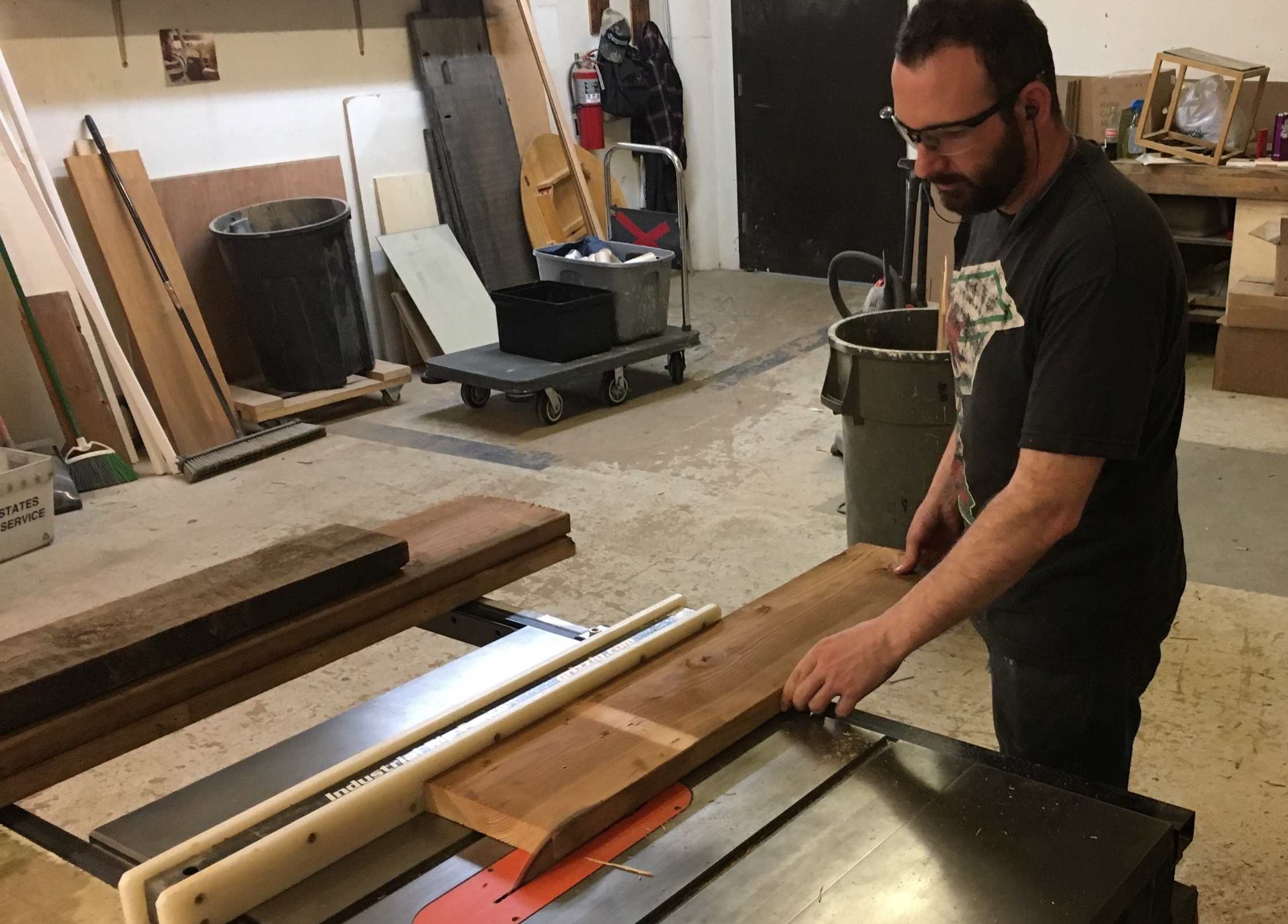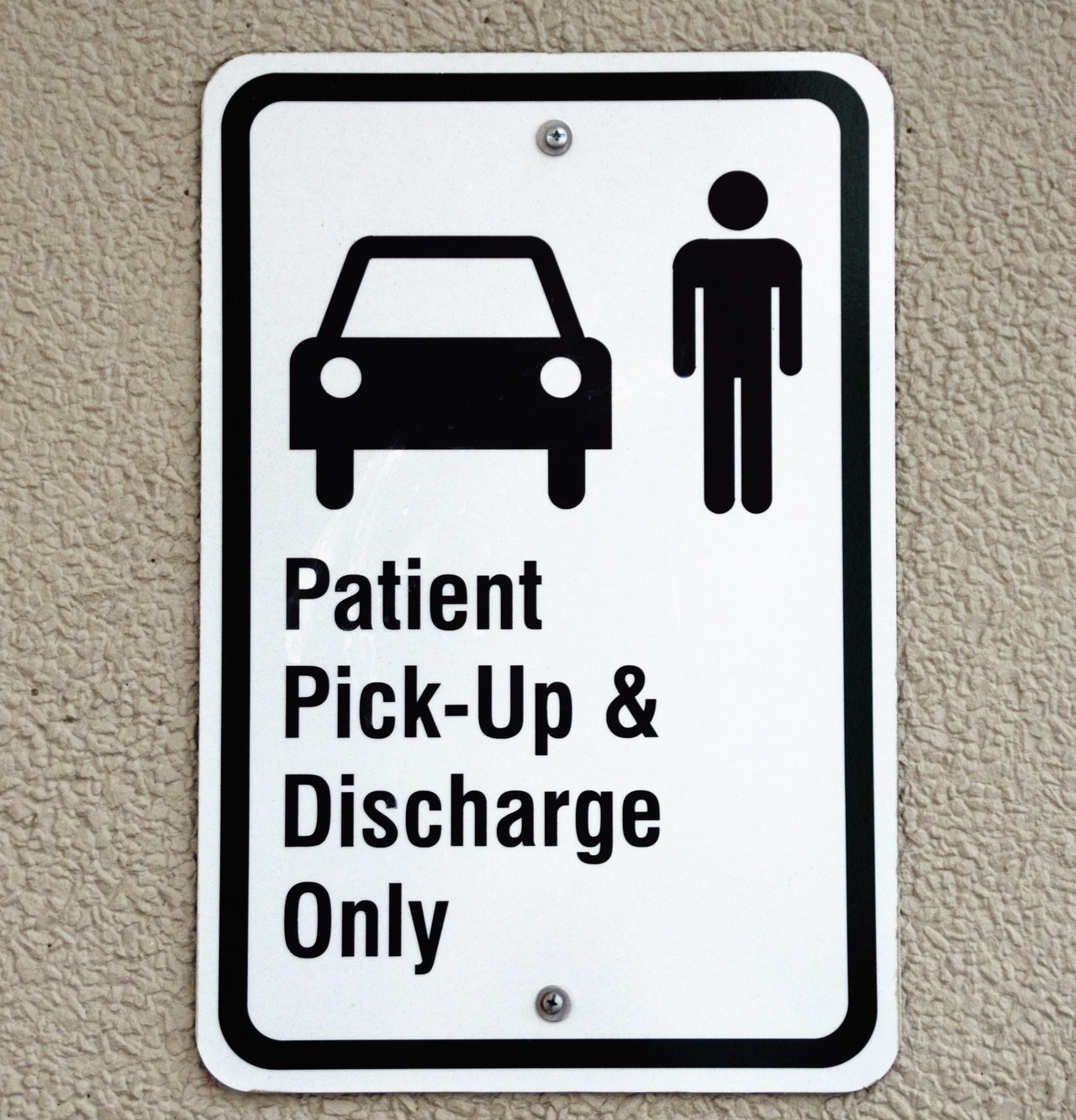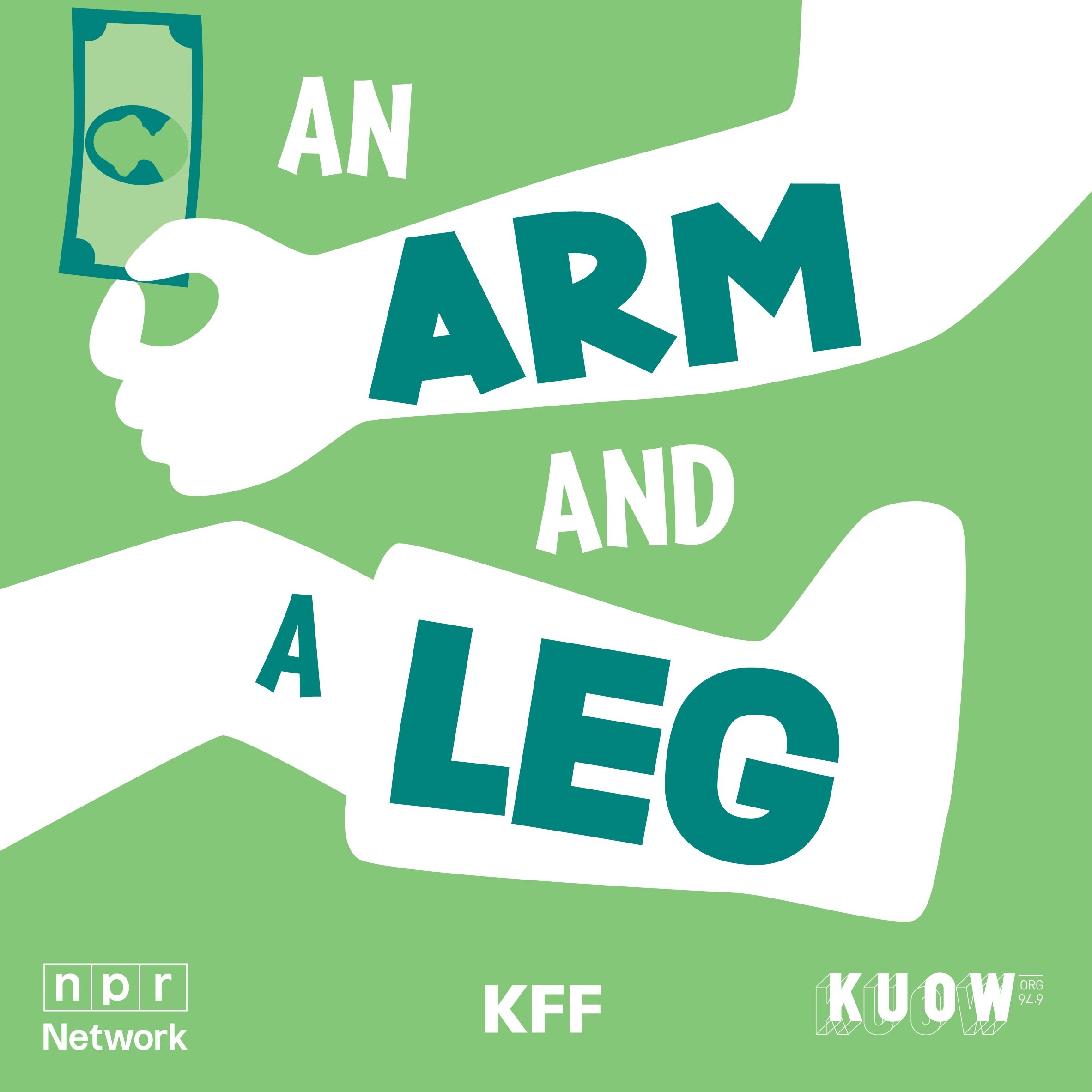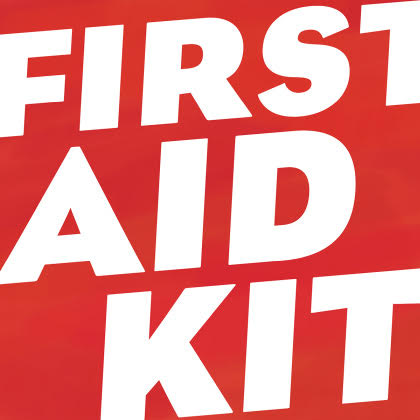
To get paid, hospitals get creative
Hospital bills are too high, and insurance doesn’t cover enough. Turns out, that’s a crisis for hospitals too: more and more of us aren’t paying those bills, because we can’t. So, they’re getting creative about collecting, and offering discounts. Which raises questions about why the bills are so high to begin with.
We start with Chicago woodworker James Crannell, who, and there’s no non-scary way to say this, stuck his finger in a table saw.
Even more scary: He didn’t have insurance. “I don’t know which was worse. The pain in my hand, or the fear of: What is this going to cost me?”
Spoiler alert: The emergency room didn’t charge him full price.
This episode kicks off a series where we start asking: How did prices get so high to begin with?

Featured Image courtesy James Crannell
Dan: James Crannell is a woodworker. He makes furniture out of reclaimed wood, like boards from old houses, and sells it on Etsy.
He does pretty well— he’s got a big shop of his own, business grows every year— but he can’t afford health insurance.
This story happened a few years ago.
Jim: I was making picture frames. I was ripping boards down the table saw and made the last rip turned off the table saw and for whatever reason, just looked away from the blade for a minute.
As I reached my hand in to grab the off cut and put my hand in this still spinning blade. So fortunately for me, since the power was off, uh, once the blade hit the bone, it pretty much kind of stopped the blade. So it didn’t go all the way through the finger. But, uh, it was a pretty, pretty gnarly, pretty gnarly situation.
Dan: By yourself.
Jim: Yeah, yeah. Here by myself so, uh, screamed for about 10 seconds, it didn’t feel anything but I knew what happened. And then I ran to a shop neighbor, um, leaving just like a trail of blood on the way over to them. They got me a bandaged up and, first stop was the urgent care because I know going to an emergency room is going to be just an obscene amount of money.
Dan: But the doc at urgent care looks at Jim’s finger and says: Um, no. I’m not the guy for this.
Jim: He was like, they’re probably going to have to amputate it. You’re going to have to go to an emergency room.
Dan: Jim and his friend get back in the car.
Jim: So that was a pretty, that was a pretty rough drive. The, the pain was so excruciating that I couldn’t even talk if I want to screen. I couldn’t even scream.
Jim: I don’t know, which was worse. The pain or the fear of what is this going to cost me?
But there are a couple of nice surprises waiting for him. First, he’s not going to lose the finger.
Jim: Doctor came in, a cracked, a couple jokes and he was like, all right,, I think we can stitch it back up.
Jim:So took him an hour and a half to put in 10 stitches. Um, the, uh, the amount of time it took for him to kind of find enough skin to reattach.
And it works. That’s surprise number one.
And then Jim stops at the desk on his way out to sign some paperwork.
Jim: and the person behind the counter and tells me if you give us $350, if you pay $350 today, we’ll take 60% off your bill.
Dan: 60%
Jim: 60%. Again, I’m thinking this could be eight, nine thousand dollars. I’m like, yeah, here’s my credit card, go ahead and charge me $350…
Dan: This is An Arm and a Leg— a show about the cost of health care. I’m Dan Weissmann.
Jim, by the way, is a listener— he sent this story in just after the show launched last fall— and, full disclosure, he supports the show on Patreon.
And Jim’s situation worked out. He ended up paying about 15 hundred bucks. A lot — but a lot less than he expected. His finger’s OK.
And he sees a big question in this story:
Jim: Is this a normal thing? If I walked into any hospital, is this something that they offer or did I look out and just happen to walk into one that offers this 60% off program?
Dan: This is a super-good question.
I don’t think there’s any way to know for sure— to find out what kind of discounts on what kind of prices are out there— but hospitals-getting-creative? That’s definitely a thing.
They’ve got to do it.
A couple of months ago, I sat in on a webinar about the “patient financial crisis” by a woman named Sarah Ginnetti.
She connected some dots. To start with, she says half of people with employer-based health insurance have a deductible of at least a thousand bucks— that’s the amount you pay out of pocket before insurance pays anything— and…
Sarah Ginnetti: We know that 70% of Americans have less than a thousand dollars savings in any given time.
Dan: So, before our insurance kicks in, 70 percent of us have a problem.
Sarah Ginnetti: And over half of Americans say that receiving a large medical bill can be almost as traumatic as receiving a very severe diagnosis in and of itself.
Dan:And here’s a thing I didn’t tell you about Sarah Ginnetti: She’s the revenue director for a hospital.
So, our patient financial crisis? It’s her patient financial crisis. Because when our bills are too high for us to pay… she doesn’t get paid.
So Sarah’s here telling other hospital administrators one way her hospital is dealing with this patient financial crisis.
Sarah’s hospital has brought in a company called CarePayment— like car payment, with a silent e— to collect money from patients.
And CarePayment makes paying for surgery kind of like financing a car:
No money down, everybody qualifies, easy payments, zero interest. This is from a promo clip the company posted to YouTube.
Laura: I was very happy to find out from care payment that we were going to be able to do monthly payments.
Dan: This is an upgrade from the usual medical-billing approach— bad cop: Pay up, in full, right now, or we send you to collections and wreck your credit. Which most of us are pret-ty familiar with.
Sarah Ginetti says the Good Cop approach is working for her hospital: they now collect twice as much money from patients as before— and that’s after CarePayment takes its cut.
So, all those bills we can’t afford? They’re good news for CarePayment.
Like, the company commissions surveys and puts out press releases to say so. Here’s one from 2018: “New CarePayment research shows Americans can’t afford their medical bills.”
Awesome, right?
I talked with Laura Aylward— she’s a marketing executive at CarePayment. She gets that when bad times for people mean good times for your company, it means things are a little messed up.
Laura: The incentives are misaligned in many respects. And, you could even argue like, why, why do you even— to your point: Why, why do you even have to exist?
Dan: You know, why do you as a company have to exist? Like why— what is that — what’s the point? We know we — Shouldn’t it be better?
Laura: Yes. And yes and yes, maybe so. But the reason a company like ours will always exist IS Americans do want to pay their bills. Most people do want to satisfy their debt, you know, to, to for, for services rendered.
Dan: And when we owe a hospital, most of us definitely can’t pay the whole thing in one go.
So, CarePayment is doing great. A press release says its business recently went up fifty percent. In a year.
And then there are hospitals, getting creative on their own.
That’s in just a minute on An Arm and a Leg, right after the break.
An Arm and a Leg is a co-production of Public Road Productions and Kaiser Health News, a non-profit newsroom covering health care in America that’s an editorially independent part of the Kaiser Family Foundation. It is NOT affiliated with the giant health care provider Kaiser Permanente. They share an ancestor— it’s a fun story, and you can read about it at arm and a leg show dot com, slash, Kaiser.
So, problem: hospitals bills that are— too high for people to pay— means people don’t pay their bills. Hospitals lose money. So, some of them are getting creative.
For instance, a pair of hospitals in eastern Ohio offered a special recently: Bring us a bill from last year, and you can pay it off at 50 cents on the dollar.
I talked with Jose Guevara, the revenue director for the two hospitals— they’re owned by the same chain, and they share administrators and stuff.
He started last year, and things were looking bad.
Jose: People were just not paying their bills. And I said, how do I reach out this community? Cause when I got here, the first thing that was told to me was, you know, we’re a poor community, our people don’t pay their bills and so forth. And I said, Oh, you know, you really don’t realize I come from a state that’s number two— is the poorest state of the nation — Albuquerque New Mexico, you know — and people pay their bills and when we give them discounts and we work with them and so forth.
Dan: So a little while after he arrived, he got the OK for a one-month experiment. 50 percent off on old bills. They just put up flyers in the hospital, to see what would happen.
Jose: And that worked out really good. Our collections for that month was almost $1.2 million for the whole month. So,
Dan: And what does it usually?
JOSE: So usually around some, but maybe 600,000 so we almost doubled it
Dan: So you gave people a discount at 50% but you still took in twice as much money.
JOSE: Yes, yes, yes.
Dan: That was last fall. They liked all that money, so they ran the special again in February and March of this year. And this time they pushed it harder — they hit facebook and Twitter, got local media to write about it.
Suddenly Jose’s team was getting calls from all over the country.
Jose: They were going like, “Hey, uh, you know, my mother said that she owes a bill. I mean, I’m in Columbus, Ohio. Can I pay that bill for her?” By— of course— by all means! You know: 50% discount, it’s perfect. So come on in. So we just, you know, we have been getting calls from Atlanta, Georgia, you know, Nashville, Tennessee, Columbus, Ohio.
Dan:The hospitals ended up extending the special offer through tax day— to get people’s refund checks. This time, they tripled their usual take.
So, this raises kind of an obvious question:
Dan: And so how— how can you — how can you afford to give 50% off?
There’s an obvious answer: 50 percent of something is better than a hundred percent of nothing. It’s even better when people are calling you to pay it, instead of you having to spend time and money chasing them to MAYBE pay it.
But Jose gave me a second answer too:
Jose: Well, you know, people have asked that question But this is the thing: The insurance— we ususally get paid 60% from most of our carriers— Medicaid 44%— so 50% is affordable to us.
Dan: He’s saying that carriers— insurance companies— pay them 60 percent. Medicaid pays 44 percent.
So, fifty percent? It’s in the range of what the hospital EXPECTS to get, what it routinely accepts from the big players who pay MOST of the bills.
Which raises a whole NOTHER question: If you can afford a big discount like that … then why’d you set the price so high in the first place?
Wherever you look, the prices don’t seem real.
Jose is happy to get 50 percent, in large part because otherwise he’s likely to get nothing. Jim Crannell in that emergency room gets a sixty percent discount— probably for the same reason.
Sarah Ginetti is happy to give CarePayments a fat cut because her hospital still gets more money this way.
And in all these cases, the hospitals are losing money because they’ve set the prices so high.
It seems like it’s not working for anybody— except maybe for CarePayments.
In the next few episodes of An Arm and a Leg, we’re going to get right into it: How’d we end up with the prices that we’ve got?
We’ll start with one procedure— a brain MRI— and four wildly different price tags: From 1 thousand dollars to 25 grand. Two of them from the same hospital, for the same patient on the same day.
That’s next week on “An Arm and a Leg.” Till then, take care of yourself.
This is “An Arm and a Leg,” a show about the cost of health care.
This week’s stories came from listeners— not just Jim Crannell. I found out about Sarah Ginetti and Jose Guevara after following a tip from a listener who works as a health-care consultant. Thank you!
Keep that stuff coming! Arm and a Leg Show dot com, slash, contact.
This episode was produced by me, Dan Weissmann. Our editor is Whitney Henry-Lester, our consulting managing producer is Daisy Rosario. Our music is by Dave Winer and Blue Dot Sessions. Adam Raymonda is our audio warlock. Our intern is Daniel Fernandez.
An Arm and a Leg is a co-production of Public Road Productions and Kaiser Health News, a non-profit newsroom covering health care in America that’s an editorially independent part of the Kaiser Family Foundation.
It is NOT affiliated with the giant health care provider Kaiser Permanente. They share an ancestor— and it’s a fun story. You can hear it at the end of this season’s first episode, or check it out at arm-and-a-leg-show, dot com, slash, kaiser
Diane Webber is the National Editor for Broadcast and Taunya English is Senior Editor for Broadcast Innovation at Kaiser Health News— they are the editorial liaisons for this show, and two of the world’s nicest humans.
She also supports this show on Patreon. And this is the point in the show where we give a shout out to new supporters.
And Diane joined An Arm and a Leg as a Patreon supporter just as Season 1 ended— so Diane is the first of more than a hundred people I am about to thank, right now. Because anybody who pledges 2 bucks a month or more gets a shout-out right here.
There’s other rewards too— you can see them at patreon dot com slash arm and a leg show.
And now.
ARE YOU READY???
Thank you so much:
Lisa Poirier, Amber, Sea Dough, Laura L Curio-Hoodenpyle
Tony Bucko, Rachel Feddor, Susan Joslyn, Matt Fay, Ben Parish, Craig Wilson, Jená Burges,
Walter,
Ian Duffy, Shelby Jouppi, Nathan Lawrence, James Crannell, Liz Salmi, Thomas Monter, Karen Murtagh, Taylor Duckett, Edward Lewis,
Krys Kamieniecki, Joshua D Shoop, Jill G. Arellano, Bryan Willett, Amanda Crick, Robert Stoanes, Tony, Kaitlin Mallouk, Brian Rak, David jean, Justin Mills,
Erin Figy
Phillip Andrew Reid, Alvaro Martinez, brook vanderford, Midori Krieger, Leah Pollacksmith,
James Derouin, Kevin Grego, Ben Rockwood, Dr. Travis J. Elliott, Lisa Sieverts, Jason Ashbaugh, Stefanie Rossi, Chris Clark,
alan e, Candace Sparkman, Braeden Johnson, Angela Forfia,
David Zanni, Gillian Friedman, Seth Goldman, Danny Lynch, Michael Thibodeaux, Elizabeth plishka, Jeremy Brill, Joyce McMillin, Melissa Puius,
Shelley Steigerwald, Amber Green, Tyler Bosma, Arthur Wong, Melissa Picoli Philips, Marv Hoffman
Doug Schall, Justin Bosley, Jack Phelps, John F. Meyer, Katherine Walker, Chris Brown, Jeremy Wood, Brian G. Shacklett, Julie Berrey, PAUL D BLANCHARD, Bizzy.tv,
Tina Faber, Laura Orozco, Nathan Stoddard, Alec and Sharon Bloyd-Peshkin, Chelsea Lasky-McFarlin,
Arthur Werkheiser, Cecilia Cissell Lucas, Jon Stoper, Devon Olson, George Lara, Ben Gamari, Kristin HItchcock, Alida P,
Sara Baciak, Andrew Warzon, Dr. April Hendryx, Vicki Broach, Melissa Parker, Lucy Reynell, Jeff Clark, Crystal Amador, Laura, Wk Kirk,
DONALD McLeod, Mick Dumke, Beverly Chappell, Steve Vance, David Cintron, Michael Frolichstein, Thomas Cheney, Leonard Shepard, Beth Lange, Jake Burton Denmark, Nick, Mike Hanlon, Josephine Elder, Everette Mills, Adina Lav, Maria Albina, Jewel Ryder, Elizabeth Feldman, Amy E Binns-Calvey,
Aude Puyfoulhoux, Nathaniel Cossey, Kerry Williams, Neeti Kanodra, Daniel Raynaud
You rule.

Latest Episodes
The great American drug shortage isn’t an accident, it’s artificial (from Organized Money)
Robots sing: The Prescription Drug Playbook Song
The Prescription Drug Playbook, Part Two
Looking for something specific?
More of our reporting
Starter Packs
Help! I’m stuck with a gigantic medical bill.
The prescription drug playbook
Why are my meds so expensive?
See All Our Starter Packs
